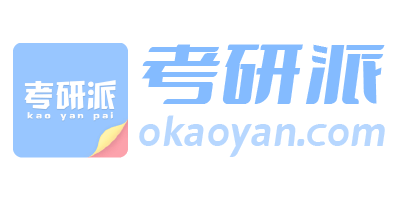北京大学建筑与景观设计学院生态城市联合实验室介绍 正文
生态城市联合实验室是哈佛大学设计研究生院和北京大学建筑与景观设计学院的合作项目。长期以来,两所大学师生之间保持着良好的交流合作关系,在此基础上,两校于2014年9月成立了该跨学科合作项目。
目前,全球面临多种生态挑战,如资源短缺、环境污染、气候变化。中国城市面临严峻挑战的同时,也面临难得的机遇。未来发展应减少环境破坏,减少视觉及其他形式的污染,尊重海洋生物、自然资源、地貌、植被, 采用持续发展技术,并使之与景观、当地生活方式及工业相结合。
生态城市联合实验室将考察中国具有不同地理、气候、文化与经济特征的城市,并建立城市一览表。最终目标是通过对比不同城市,更好地了解另类发展模式,为中国城市提供更具弹性的未来发展规划,解决废弃物、能源、空气污染、建筑设计等问题。另类未来发展规划将在研究成果中出版。该合作项目包含科研和教育两部分。
科研
科研项目将研究中国城市化过程中特有的环境、社会、法律和经济问题。研究员将以探索未来发展规划为导向,研究中国城镇景观建筑,城市生活,城市基础设施,绿色建筑及其可持续性。
科研将广泛咨询业界及公众意见,讨论以下与健康息息相关的话题:
1. 各级城市改造
2. 未来新城镇
3. 污染及城市健康,包括人口老龄化和城市化
4. 城市基础设施,公共空间
5. 生态设计,为绿色城市和景观收集并测试数据
科研包括三个,各阶段可同时开展:田野调查,方案设计,方案实施。
田野调查:
从2016年夏季开始,在两校教员带领下,核心研究团队将在中国进行广泛田野调查。绘制解析图和地图,以研究城市化进程中的环境、经济、地理及社会生态。
方案设计:
以本科研项目成果为依据,制定规划原则,完善设计方案。
方案实施:
规划原则和未来发展方案将成为未来项目蓝图。
教育
生态城市联合实验室是一个广阔的平台,促进城市化监督管理技能的发展,并使教职员工和学生得以在中国进行研究。教学部分包括多种形式,如专题研讨会,讲习班,科研奖学金,学生实习,系列讲座,研讨班,方案设计实践课等。除此之外,中国城市将两所大学教学和学术出版提供个案参考。
Outline
The Ecological Urbanism Collaboration EUC is a collaboration between the Harvard University Graduate School of Design and the Peking University College of Architecture and Landscape. The two universities, which have a history of cooperation and interaction among their faculty and students, established the trans-disciplinary collaborative program in September 2014.
The world is currently facing many ecological challenges relating to questions of scarcity of resources, pollution, climate change, and risk. Chinese cities face a particular set of challenges, but also distinct opportunities. Future development should minimize disruption to the environment, reduce visual and other forms of pollution, respect marine life, natural resources, topography, and vegetation, and incorporate sustainable technologies that are integrated with the landscape and with local lifestyles and industries.
The EUC is looking at cities throughout China located in different geographic, climatic, cultural, and economic regions in order to build up a catalogue of cities. Through a method of city comparison, the ultimate goal of the collaborative project is to achieve a better understanding of alternative modes of developing and planning a more resilient future for Chinese cities, including questions of waste, energy, air pollution, and building design. These alternative futures will be outlined in publications arising from the multi-year study. The collaborative project has two main components: Research and Education.
Research
The first component is a research program that studies the unique environmental, social, legal, and economic challenges of Chinese urbanization. Researchers investigate cities and towns, including landscape architecture and urbanism, urban infrastructures, and green buildings and sustainability, with a view toward producing scenarios that guide the future. Specific recommendations will consider the distinct ecologies (environmental, social and aesthetic) of specific cities.
The research, which will include extensive consultations with institutional partners and the public in Chinese cities, will address the following topics, with issues relating to health central to each of them:
1. Regeneration, focusing on cities at multiple scales
2. Future of new towns
3. Pollution and healthy cities, including research on aging and urbanization
4. Urban infrastructure and the future of public space
5. Designed ecologies, testing and gathering data for the designed green city and landscapes
The research has three main phases which may operate simultaneously: Fieldwork; Designing Scenarios; and Implementation.
Fieldwork:
Beginning in summer 2016, a core team of researchers led by faculty members from both universities will conduct extensive fieldwork in China. Analytic drawings and maps will be created to investigate the numerous environmental, economic, geographic and social ecologies of urbanization.
Designing Scenarios:
The design and development of scenarios, including design and planning principles will be based on the research undertaken.
Implementation:
The design and planning principles and future scenarios will be translated into prospective projects.
Education
The second component of the project concerns education. The EUC provides a forum to develop skill sets to oversee the stewardship of urbanization in the future. The EUC facilitates a platform for faculty, fellows, and students to teach or conduct research in a Chinese context. The pedagogical elements may include symposiums, workshops, research scholarships, student internships, lecture series, seminar courses, and design studios. In addition, Chinese cities will form the basis of case studies to be referenced in the teaching and publications of both universities.
研究人员
介绍
Mohsen Mostafavi
哈佛大学设计研究生院院长,设计专业讲座教授
俞孔坚
北京大学建筑与景观设计学院院长,长江学者特聘教授
Gareth Doherty
哈佛大学设计研究生院景观设计副教授,高级研究员
Hannes Zander
研究助理,领队
许立言
项目副总监,外事
Hayden White
研究助理
刘钿
生态城市联合实验室办公室主任
Stephen Ervin
哈佛大学设计研究生院计算机资源系副主任
Pat Roberts
哈佛大学设计研究生院执行院长
Charles Waldheim
哈佛大学设计研究生院风景园林系资深教授
联系方式
生态城市联合实验室
中国北京市海淀区颐和园路5号,红四楼
北京大学建筑与景观学院
电话: +86 139-1145-6012
Contact
Ecological Urbanism Collaboration
5 Summer Palace Road
Peking University, College of Architecture and Landscape
Red Building No. 4
Haidian District, Beijing, China
Tel. +86 139-1145-6012
北京大学
添加北京大学学姐微信,或微信搜索公众号“考研派小站”,关注[考研派小站]微信公众号,在考研派小站微信号输入[北京大学考研分数线、北京大学报录比、北京大学考研群、北京大学学姐微信、北京大学考研真题、北京大学专业目录、北京大学排名、北京大学保研、北京大学公众号、北京大学研究生招生)]即可在手机上查看相对应北京大学考研信息或资源。
![北京大学考研公众号]()
![考研派小站公众号]()
本文来源:
http://www.okaoyan.com/beijingdaxue/yanjiushengyuan_251353.html 























































































